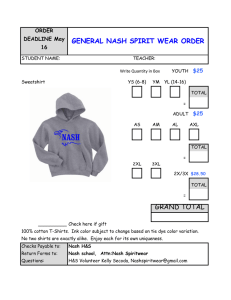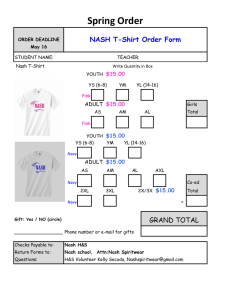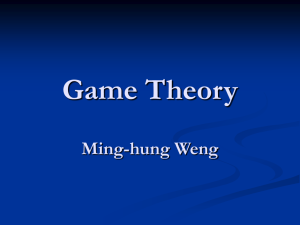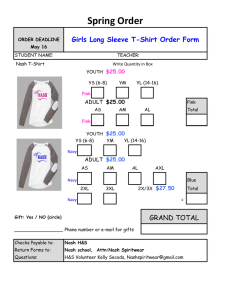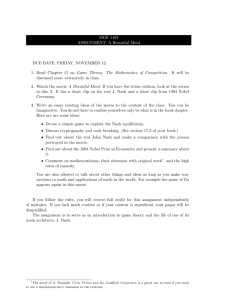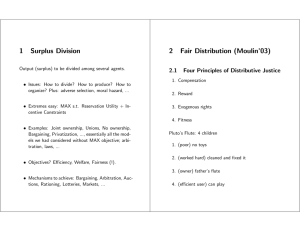MATH 437 Game Theory
advertisement
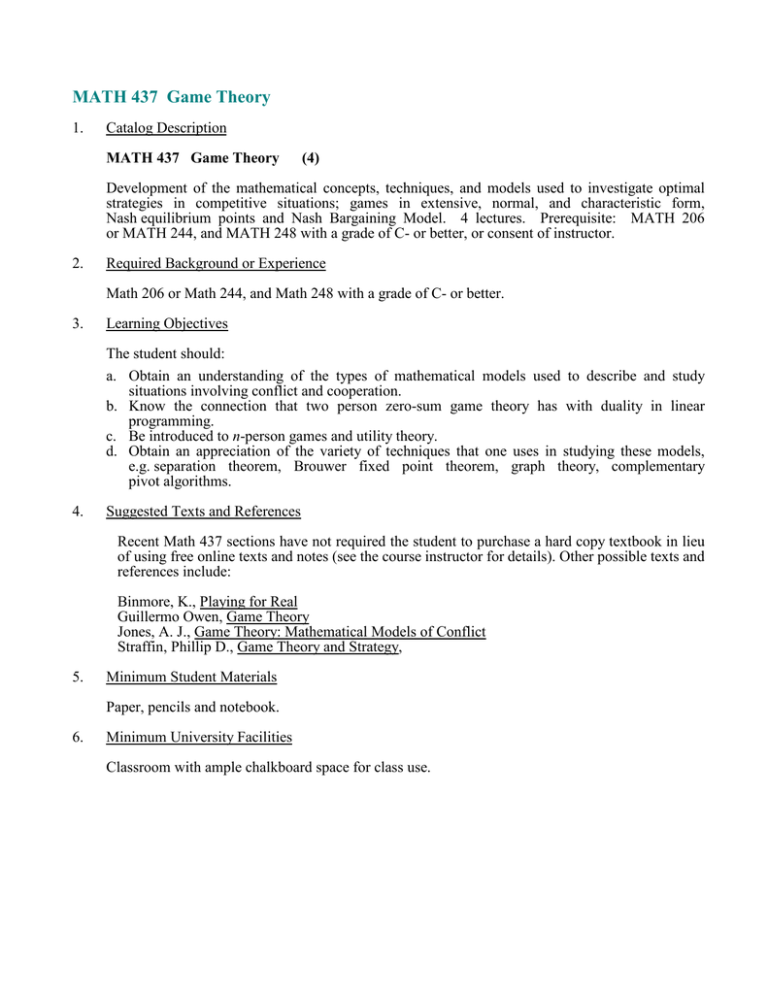
MATH 437 Game Theory 1. Catalog Description MATH 437 Game Theory (4) Development of the mathematical concepts, techniques, and models used to investigate optimal strategies in competitive situations; games in extensive, normal, and characteristic form, Nash equilibrium points and Nash Bargaining Model. 4 lectures. Prerequisite: MATH 206 or MATH 244, and MATH 248 with a grade of C- or better, or consent of instructor. 2. Required Background or Experience Math 206 or Math 244, and Math 248 with a grade of C- or better. 3. Learning Objectives The student should: a. Obtain an understanding of the types of mathematical models used to describe and study situations involving conflict and cooperation. b. Know the connection that two person zero-sum game theory has with duality in linear programming. c. Be introduced to n-person games and utility theory. d. Obtain an appreciation of the variety of techniques that one uses in studying these models, e.g. separation theorem, Brouwer fixed point theorem, graph theory, complementary pivot algorithms. 4. Suggested Texts and References Recent Math 437 sections have not required the student to purchase a hard copy textbook in lieu of using free online texts and notes (see the course instructor for details). Other possible texts and references include: Binmore, K., Playing for Real Guillermo Owen, Game Theory Jones, A. J., Game Theory: Mathematical Models of Conflict Straffin, Phillip D., Game Theory and Strategy, 5. Minimum Student Materials Paper, pencils and notebook. 6. Minimum University Facilities Classroom with ample chalkboard space for class use. Math 437, page 2. 7. Content and Method Delivering straight lectures often can be avoided by illustrating concept with in-class games. Real world examples should be included when possible. a. Finite two person zero sum games (matrix games) 1) Introduction, examples, and the solution concept 2) The equilibrium theorem and solving non-singular matrix games 3) The Shapley Snow procedure (optional) 4) Linear programming and the simplex algorithm specialized to matrix games 5) Fictitious play b. Other two person zero sum games 1) Games on the square 2) Multistage and recursive games c. Nonzero sum two person games 1) Nash equilibria and Pareto optimality 2) The prisoners dilemma 3) Evolutionarily stable strategies 3) Cooperative games and the Nash bargaining scheme d. N-person games 1) Games in characteristic function form 2) Solution concepts including the core, Shapley Value and Banzaf-Colman index 3) Fair division 8. Methods of Assessment Homework assignments, class demonstrations, quizzes, and examinations. Homework exercises should be engineered to guide learning outside of the classroom (this may include writing small computer programs, reading game theory literature, or applying game theory concepts to real world situations).
